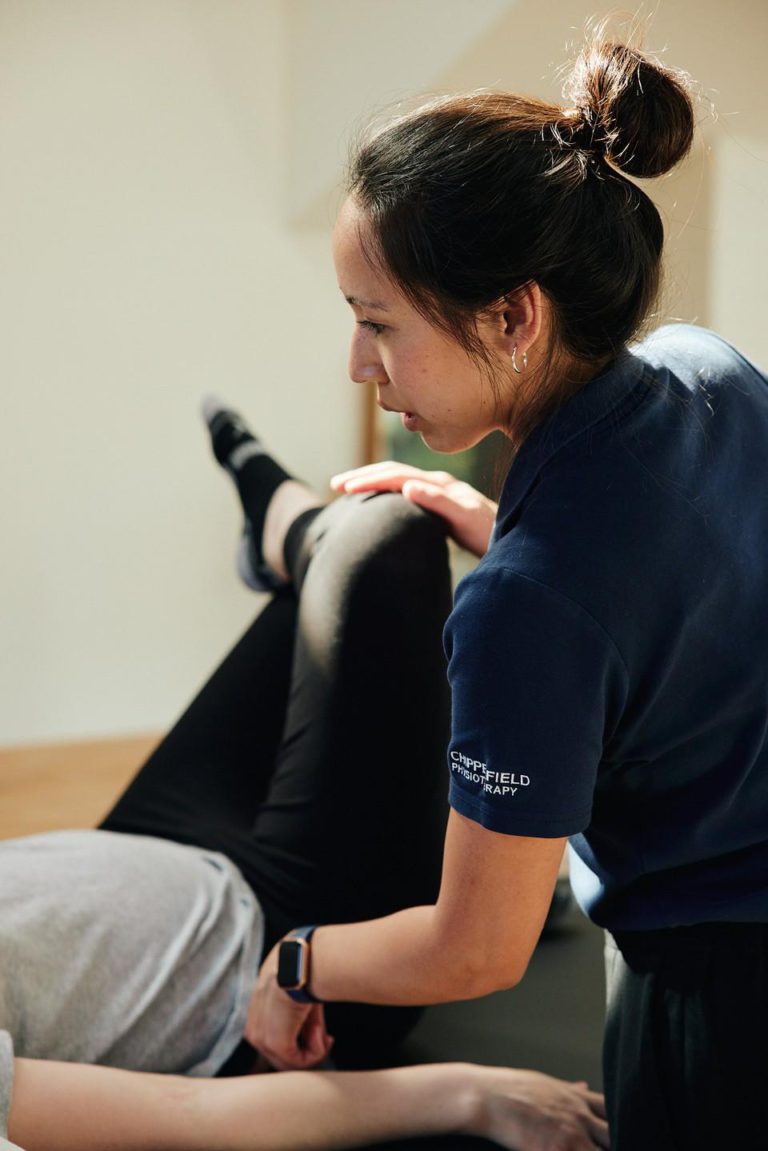Why Pelvic Floor Physiotherapy Is Important for Women’s Health
The article was written by Joanna Varley, Registered Physiotherapist at Chipperfield Mobile Physiotherapy.

- Kegel exercises: These exercises involve contracting and relaxing the pelvic floor muscles to help strengthen them.
- Myofascial release: This technique involves using gentle pressure to release tension in the muscles and connective tissue of the pelvic area.
- Biofeedback: This technique involves using sensors to monitor muscle activity in the pelvic area, which can help a woman learn to control and strengthen her pelvic floor muscles.
- Manual therapy: This technique involves using gentle hands-on techniques to release tension in the muscles and connective tissue of the pelvic area.

Call to Action:
Sources:
- “Pelvic floor muscle training for urinary incontinence in women” by J.M. Hay-Smith et al. (2014) – This systematic review and meta-analysis looks at the effectiveness of pelvic floor muscle training (PFMT) for the treatment of urinary incontinence in women. The study concludes that PFMT is an effective treatment for stress, urge, and mixed urinary incontinence.
- “Pelvic floor muscle training for sexual dysfunction in women” by A.M. Roovers et al. (2011) – This systematic review looks at the effectiveness of pelvic floor muscle training (PFMT) for the treatment of sexual dysfunction in women. The study concludes that PFMT is effective in improving sexual function, including sexual pain and arousal, in women with sexual dysfunction.
- “Pelvic floor muscle training for the treatment of pelvic organ prolapse” by J.M. Hay-Smith et al. (2014) – This systematic review and meta-analysis looks at the effectiveness of pelvic floor muscle training (PFMT) for the treatment of pelvic organ prolapse in women. The study concludes that PFMT is an effective treatment for pelvic organ prolapse and may reduce the need for surgery.
- “Effectiveness of pelvic floor muscle training in women with pelvic organ prolapse: a systematic review” by S.M. Rahnama et al. (2013) – This systematic review looks at the effectiveness of pelvic floor muscle training (PFMT) for the treatment of pelvic organ prolapse in women. The study concludes that PFMT is effective in reducing symptoms of pelvic organ prolapse and improving pelvic floor muscle function in women with pelvic organ prolapse.
To learn more about health practitioners in your area or to ask about providers who address specific treatment needs, contact us today.
About the author

Joanna Varley
Jo graduated from Queen’s University in 2006 and has over 12 years of physiotherapy experience. She’s worked with a broad spectrum of clients and conditions; from acute care to rehab. She is a member of the Canadian Physiotherapy Association, and the College of Physical Therapists of British Columbia and has Pelvic Floor Levels 1, 2, and 3 specialized training. She is a teaching assistant at UBC college of Physiotherapy, and a course instructor for the Internationally Educated Physiotherapists Exam Preparation (IEPEP) Program.
-
This author does not have any more posts.



